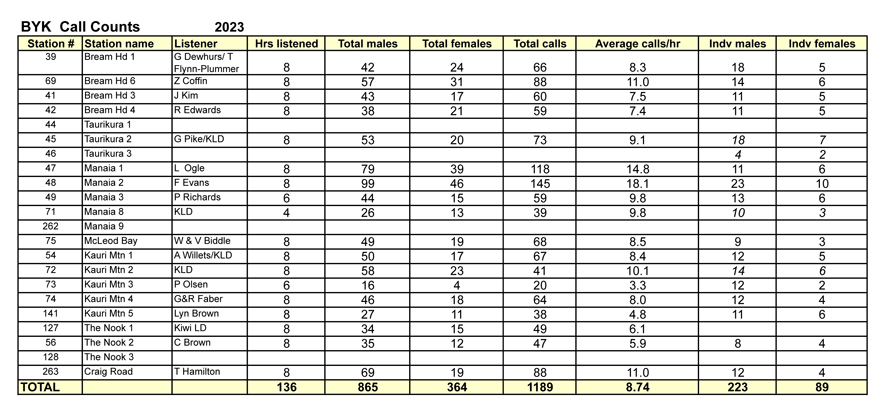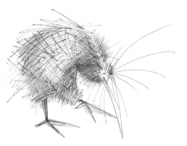The 2023 adult kiwi population estimate for the Whangarei Heads is 1115
With a very wet autumn/early winter our kiwi have been well fed and seem to have had a long steady kiwi calling season. There wasn’t the dramatic peak in calling we have experienced in past years where autumn rain has followed a dry summer concentrating the calling season. The periods of wet and windy weather made counting kiwi tricky at times, busy lives complicated matters further so thank you to our dedicated team of kiwi counters for fitting this important work in. There were some calm patches of weather and most sites got 8 hours of listening done so we got a reasonable measure of the effectiveness of the Kiwi Recovery work being done at the Heads. Marsden Point being shut certainly helped by reducing the background noise at some sites. The long-term results show that good stoat control, through quality trapping and Kiwi Saver (1080) pulses, is giving good kiwi chick survival and above all else it shows responsible dog control by the vast majority of our community.
Overall the counting gave an approximate kiwi population of 1115 compared with 1130 last season and 80 back in 2001.
Thank you all for all the hard work braving the cold, listening hard and doing the paperwork. Thanks also to those of you that did your own data entry and to Fay Evans for all the extra data entry that she does. Without your efforts we would not know what was happening with our kiwi population.
During the Annual Kiwi Call Count, kiwi calls are recorded and collated giving us useful data on the local kiwi population. Every year, hundreds of volunteers throughout New Zealand brave the chilly nights of autumn, sit in the dark, and listen for kiwi calls. They must listen at these ‘stations’ for 2 hours each night, for a total of four nights during the annual kiwi call count. This usually occurs during May or June, depending on when the dark phase of the moon takes place at the peak of the kiwi mating season.
Listening stations are assigned and are revisited every year, in order to document differences in the number of calls that are heard from year to year.
Summary of this year’s listening for each station giving M and F calls, and the actual number of M and F kiwi estimated at each site by using the directional sheet

The following table shows how numbers have steadily increased over the past 20 years of monitoring
WHLF kiwi call count 2002 to 2023 summary
If you’ve got good hearing and a bit of patience and don’t mind the cold – this could be just the job for you!
Contact us at info@backyardkiwi.org for details.













